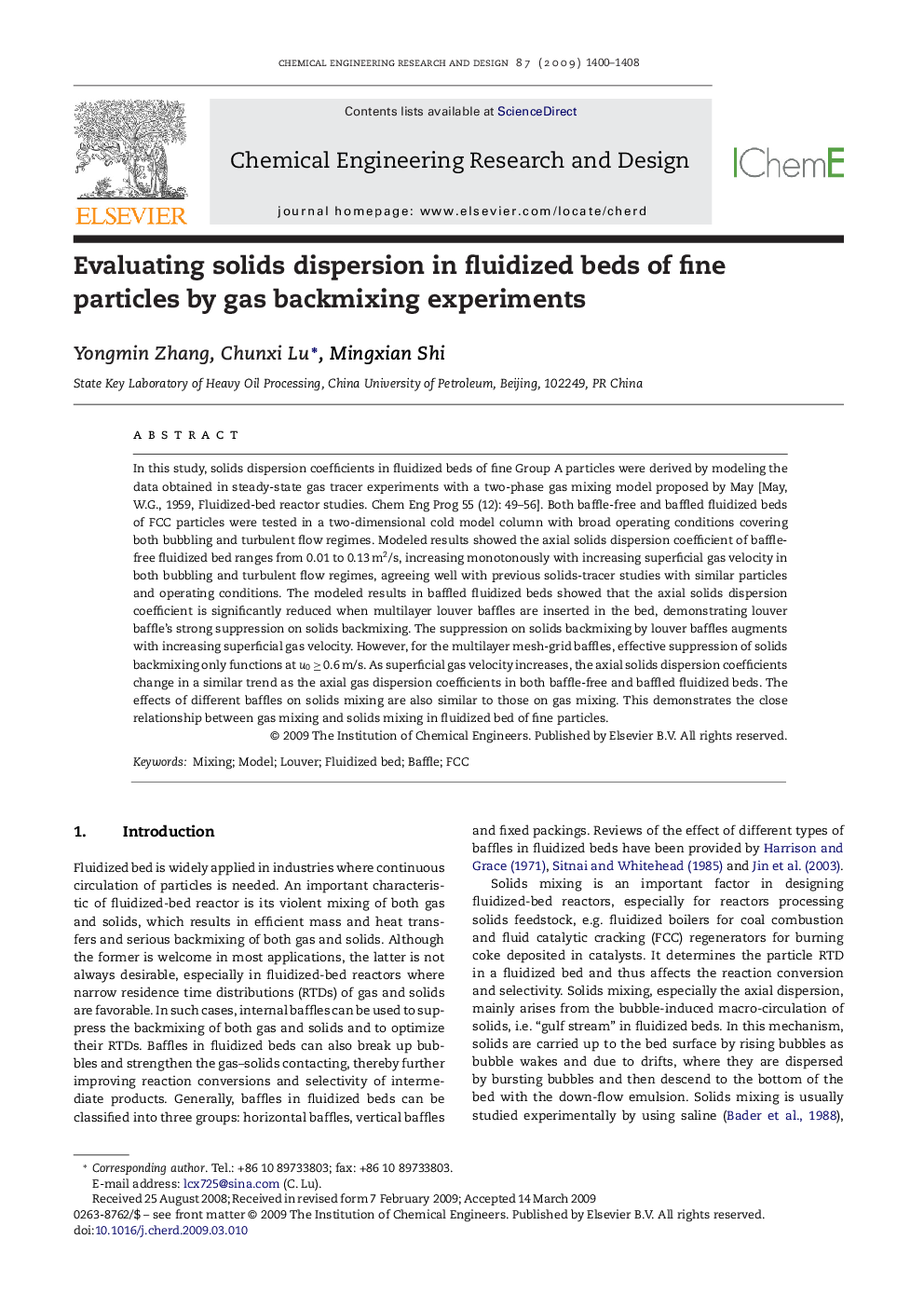| Article ID | Journal | Published Year | Pages | File Type |
|---|---|---|---|---|
| 621493 | Chemical Engineering Research and Design | 2009 | 9 Pages |
In this study, solids dispersion coefficients in fluidized beds of fine Group A particles were derived by modeling the data obtained in steady-state gas tracer experiments with a two-phase gas mixing model proposed by May [May, W.G., 1959, Fluidized-bed reactor studies. Chem Eng Prog 55 (12): 49–56]. Both baffle-free and baffled fluidized beds of FCC particles were tested in a two-dimensional cold model column with broad operating conditions covering both bubbling and turbulent flow regimes. Modeled results showed the axial solids dispersion coefficient of baffle-free fluidized bed ranges from 0.01 to 0.13 m2/s, increasing monotonously with increasing superficial gas velocity in both bubbling and turbulent flow regimes, agreeing well with previous solids-tracer studies with similar particles and operating conditions. The modeled results in baffled fluidized beds showed that the axial solids dispersion coefficient is significantly reduced when multilayer louver baffles are inserted in the bed, demonstrating louver baffle's strong suppression on solids backmixing. The suppression on solids backmixing by louver baffles augments with increasing superficial gas velocity. However, for the multilayer mesh-grid baffles, effective suppression of solids backmixing only functions at u0 ≥ 0.6 m/s. As superficial gas velocity increases, the axial solids dispersion coefficients change in a similar trend as the axial gas dispersion coefficients in both baffle-free and baffled fluidized beds. The effects of different baffles on solids mixing are also similar to those on gas mixing. This demonstrates the close relationship between gas mixing and solids mixing in fluidized bed of fine particles.
